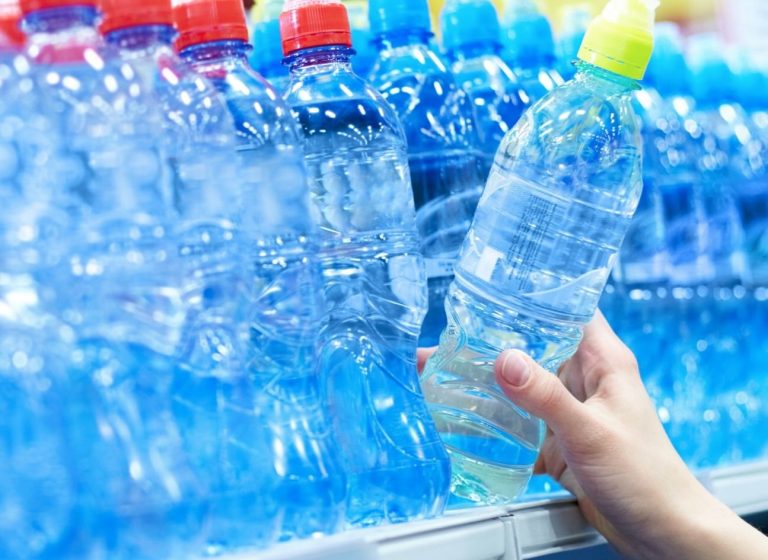
Questioning the impact of plastic on the environment: Inert but toxic?
The discussion about plastic has become increasingly polarized, with environmentalists often painting a grim picture of its impact on ecosystems. [some emphasis, links added]
On the one hand, plastic has been criticized for being too inert and difficult to break down, persisting in the environment for thousands of years. On the other hand, they are simultaneously described as toxic substances that cause serious damage to wildlife, especially birds and marine animals.
This dual narrative raises several questions: How can plastic be both inert and toxic? Does the iconic image of a dead bird filled with plastic truly represent the environmental crisis, or is it something more subtle?
Let’s look at the science and challenge some common assumptions.
The inertness of plastic
Plastics are often criticized for their durability, with claims that they can survive in the environment for thousands of years without breaking down. This inertia is a double-edged sword.
While it's true that plastics don't biodegrade easily, that same property means they're generally non-reactive and pose less of a chemical threat than other pollutants.
From a chemical perspective, most plastics are composed of long-chain hydrocarbons whose structure is similar to the molecules found in many natural substances. Because these chains are stable, they are less likely to break down into harmful by-products.
This inertness is one of the reasons plastics are so widely used—They are less likely to react with substances they come into contact with, making them safe for storing food, pharmaceuticals and other sensitive products.

Is plastic a toxic threat?
It seems contradictory that plastic is both inert and toxic at the same time. If plastics are too stable to break down in the environment, how do they release toxins?
The truth is, most plastics themselves are not toxic. Concerns often surround additives used in plastics, such as plasticizers (such as phthalates) and flame retardants, which can leach out over time.
However, The amounts of these substances that leach out of plastics under typical environmental conditions are usually too small to pose a significant threat to wildlife or humans.
Additionally, the idea that microplastics (small particles that larger plastic items can break down into) is poisoning animals and entering the food chain is still under scientific scrutiny.
Research shows Although microplastics are ubiquitous in the environment, little is known about their impact on health. Claims of widespread toxicity have not been substantiated by conclusive evidence.
For example, published in Total Environmental Science (2021) emphasis Although microplastics are common, there is no direct, measurable evidence that exposure to them has serious health effects.
The authors emphasize the need for more research to determine the true impact of microplastics on human health, particularly long-term exposure and cumulative effects.
This is consistent with broader scientific understanding that while microplastics are a concern, Claims about its widespread toxicity are not fully supported by scientific data.
A Narrative of Birds and Plastic: A Closer Look
One of the most iconic images of the environmental movement is that of a dead bird with a stomach full of plastic. This image is often used to illustrate the deadly effects of plastic pollution. However, this narrative may oversimplify a more complex reality.
Birds, especially species such as albatrosses and petrels, naturally ingest solid objects such as rocks to aid digestion. These objects, called gastroliths, help grind up the food in the bird's gizzard. It is therefore not surprising that birds may also mistakenly eat small pieces of plastic, mistaking them for rocks or food.

Famous ornithologists and bird biologists noted The presence of plastic in a bird's stomach does not necessarily mean it is toxic or harmful.
For example, seabird ecology expert Dr. Jan Andries van Franeker noted: Many birds can pass indigestible objects through their digestive systems without causing significant harm.
If plastics are as inert as claimed, their presence in bird stomachs, while worrisome, may not be as deadly as described.
The real problem may be the amount of plastic ingested. If birds consume large amounts of plastic, it can clog their digestive tracts, leading to starvation.
However, this may be more a matter of quantity than the inherent toxicity of plastic. Birds that ingest small amounts of plastic may simply excrete it without suffering any ill effects.
Plastic in society: overlooked benefits
The modern world is built on the convenience and versatility of plastic. From life-saving medical devices to packaging that preserves food and reduces waste, plastic plays an integral role in our daily lives.
In the medical field, plastics have transformed patient care. Sterile single-use items such as syringes, IV bags, and surgical instruments greatly reduce the risk of infection and cross-contamination.
Plastic's flexibility, durability and lightweight properties also make it ideal for prosthetics, implants and other medical devices, improving the quality of life for millions of people.
Without plastics, the healthcare industry would face significant challenges maintaining today's high standards of care.
Irrational Fear is written by climatologist Dr. Matthew Wielicki and is supported by readers. If you value what you read here, please consider subscribing and supporting the work.
Read A Break from Irrational Fear
